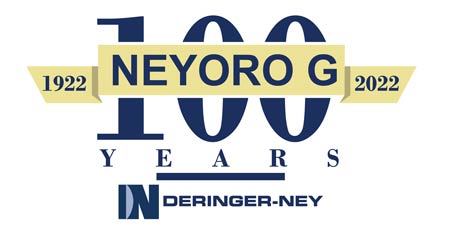ASTM B541 is the specification that governs Deringer-Ney’s Neyoro G – a unique gold electrical contact alloy with a century-long history. Recently, Deringer-Ney worked with ASTM International to bring the standard up to date, which is now referred to as B541-24. The update better reflects the material’s properties and capabilities and has been expanded to better cover modern applications. Let’s review the specification, the material’s history and applications, and the process involved to revise the spec.
Definition
ASTM B541-24 is the standard specification for a gold-rich alloy containing platinum, silver, copper, and zinc. The alloy is tarnish and corrosion resistant with high strength and hardness with relatively low electrical resistivity when compared to “karat gold” jewelry alloys. These factors make it exceptionally useful in high precision applications such as sliding contacts or slip rings. The material also be used for resistance wire. Notably, the alloy responds well to age hardening heat treatment. Age hardening increases its strength and hardness and decreases resistivity, while annealing has the opposite effect.

Material History
Ney G recently celebrated its 100th anniversary! It was originally developed in the 1920’s as a casting alloy for dental crowns and bridges; by the 1940s, it became popular as a sliding contact alloy for potentiometers and other electrical devices. Decades later, it is now one of the go-to materials for high conductivity applications where good wear resistance and tailorable mechanical properties are also desired.
Current Applications
While the alloy was mainly utilized in potentiometric devices, its applications have increased significantly in recent years. Industrial automation, aerospace, and semiconductor test equipment manufacturers now rely on this alloy for critical components. It can be precision machined into very tight-tolerance parts, which makes the alloy ideal for components such as fuel level sensors and sliding electrical contacts.
Comparison with Similar Materials
Due to its gold content, this alloy has several key advantages compared with similar copper-based alloys used for electrical contacts. Gold gives it superior corrosion resistance, while age-hardening gives designers the ability to tailor the material for optimal strength and conductivity. It also has greater wear resistance when compared to softer gold alloys, or gold layers electroplated over pure copper. This is an important factor for sliding components.
The Revision Process
Despite the material’s widespread use, this specification hadn’t been updated since 1997. To address this lapse, Deringer Ney worked closely with ASTM International to undertake a comprehensive revision. The company analyzed and provided hundreds of data points spanning over a decade of production and real-world performance to better define the specification with modern manufacturing methods and application requirements.
Key Changes in Revision
Major revisions to the ASTM B 541 specification include the following:
- Expansion of the mechanical property ranges to accept higher strength/hardness levels
- Addition of rod, in response to increased demand for that form
- Changes to referenced physical properties to more accurately reflect the capabilities of the material
- Revision of the compositional tolerances on impurities to provide tighter control over quality
- Clarification of recommended testing procedures
The changes in the properties values were driven by Deringer Ney’s extensive material behavior database, allowing us to confidently extend certain attribute ranges. For example, the previous version of ASTM B541 had an artificial ceiling on the maximum hardness and strength levels of the age hardened from cold work (HT-CW) temper. This had been lifted with the new revision, enabling users to take advantage of the material’s full potential.
As mentioned earlier, the new specification includes rod stock for applications down to 0.080 inches. This better reflects the material’s ability to be used as feedstock for precision-machined components.
Benefits of the Updated Specification
The revisions to ASTM B541 provide several key benefits to current and future users of the alloy:
- Improved Material Quality and Consistency – The tighter compositional controls and testing clarifications ensure more consistent material properties from one batch to the next.
- Expanded Performance Envelope – Higher strength and hardness levels open up new design possibilities, allowing engineers to push the limits of what it can achieve.
- Better Alignment with Modern Applications -The specification now better reflects the material’s use in precision machined components, providing greater confidence for users in industries like aerospace and semiconductor testing.
- Renewed Engagement with ASTM – By taking an active role in revising the standard, Deringer Ney has demonstrated its commitment to supporting ASTM International and ensuring the ongoing relevance of the specification.
Conclusion
ASTM B541-24 is a notable milestone in this alloy’s century-long existence. Deringer Ney played a central role in resolving the standard through a collaborative undertaking with ASTM. Together, this updated standard will enable today’s design engineers and component manufacturers to better harness the materials’ properties. As the alloy continues to find more applications across a wide range of industries, this revision helps ensure that the material remains a reliable and high-performing choice for critical electrical and mechanical systems.
